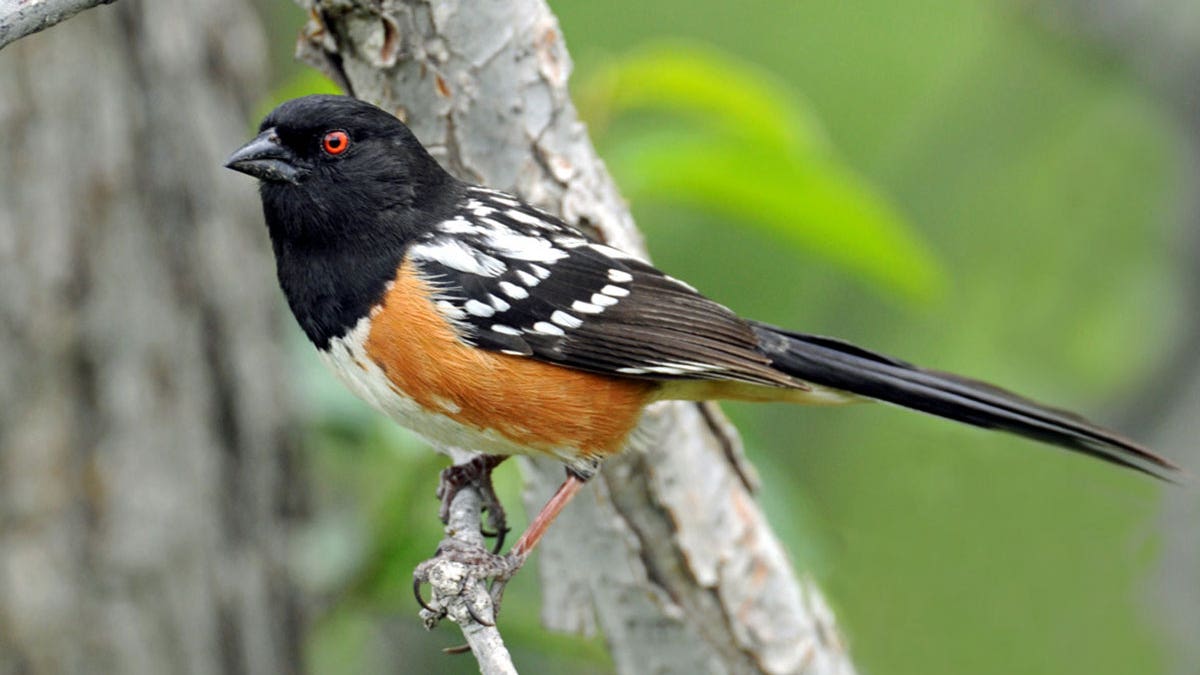
A spotted towhee, one of 11 species whose survival estimates seem to have rebounded after being affected by West Nile virus. (Image courtesy of Paul Higgins)
A new study has found that the West Nile virus is decimating the native bird population in the United States, potentially magnifying the threats from habitat loss and warming temperatures.
The study, released Monday in the Proceedings of the National Academy of Sciences, looked at the impact of the virus on 49 species from data collected at over 500 bird banding stations across the U.S. from 1992 to 2007.
Related: Bird mystery: Thousands disappear and abandon eggs, nests on island off Florida's Gulf Coast
UCLA’s Ryan Harrigan and his colleagues found significant declines in survival rates associated with West Nile virus for 23 out of 49 of the species examined.
“The declines in annual survival documented here are substantial and may have lasting effects on population abundances and growth rates of affected species,” the authors wrote, noting that the 29 percent decline found in the red-eyed vireos means over 30 million of these birds have died from West Nile.

A warbling vireo male surveys the environment during its annual migration. (Image courtesy of Tom Grey)
Of those species impacted, 11 saw survival rates decline during the initial arrival of the virus, but later recovered to pre-virus estimates. Species such as the field sparrow, downy woodpecker, and red-eyed vireo recovered to levels before West Nile.
Related: West Nile virus not backing down
But for the rest, survival rates declined and remained below pre-virus estimates in subsequent years. Among those species were the Swainson’s thrush, purple finch and tufted titmouse.
“Although the causes of these patterns are not fully understood, similarities between the impacts of disease on closely related species could be the result of common immunological responses across sister taxa, shared physiological and metabolic functions in closely allied species, or common diets and behavior among clades [groups of birds that evolved from a common ancestor],” the authors wrote. “It is also possible that these characteristics are associated with common high-risk habitats for West Nile Virus in closely related species.”
Related: West Nile Virus Devastating U.S. Bird Populations
They also suggested land use was a factor both helping and hurting birds. Some species that lived in close proximity to humans suffered worse while others fared fine, possibly because they benefited from the additional food sources around.
Wesley Hochachka, an assistant director of Bird Population Studies at Cornell University’s Lab of Ornithology, said the authors did a good job of putting “the impacts of West Nile virus into perspective, looking at the potential for long-term impacts of West Nile disease on a large number of bird species.”
“We’ve known about this difference in response of various bird species, but I do not think that anyone else has been systematic in showing that different species of birds, even close relatives, were happening,” Hochachka told FoxNews.com. “As the authors noted, species that were persistently affected potentially are having populations kept at lowered sizes for years by a single pathogen. It’s just a pity that the authors’ data ended with 2007, because it would be interesting to see if some of these effects have persisted to this day.”
West Nile, a mosquito-borne virus, was introduced in North America in 1989. It has drawn the most attention for its impact on humans, with 1 in 5 people who are infected developing a fever with other symptoms, according to the Center for Disease Control and Prevention. In rare cases, people develop a serious, sometimes fatal, neurologic illness.
Less known has been the toll it has taken on native birds, who serve as primary host for the virus. It is believed to have killed millions of birds though this is the first study to fully document the demographic impacts of West Nile on populations across larger areas of North America.
The authors did offer some hope for preserving species whose numbers are down significantly, suggesting that “increases in reproductive output and dispersal from regions where the birds were not infected may help ameliorate the effect of these massive die-off on total population abundances.”
